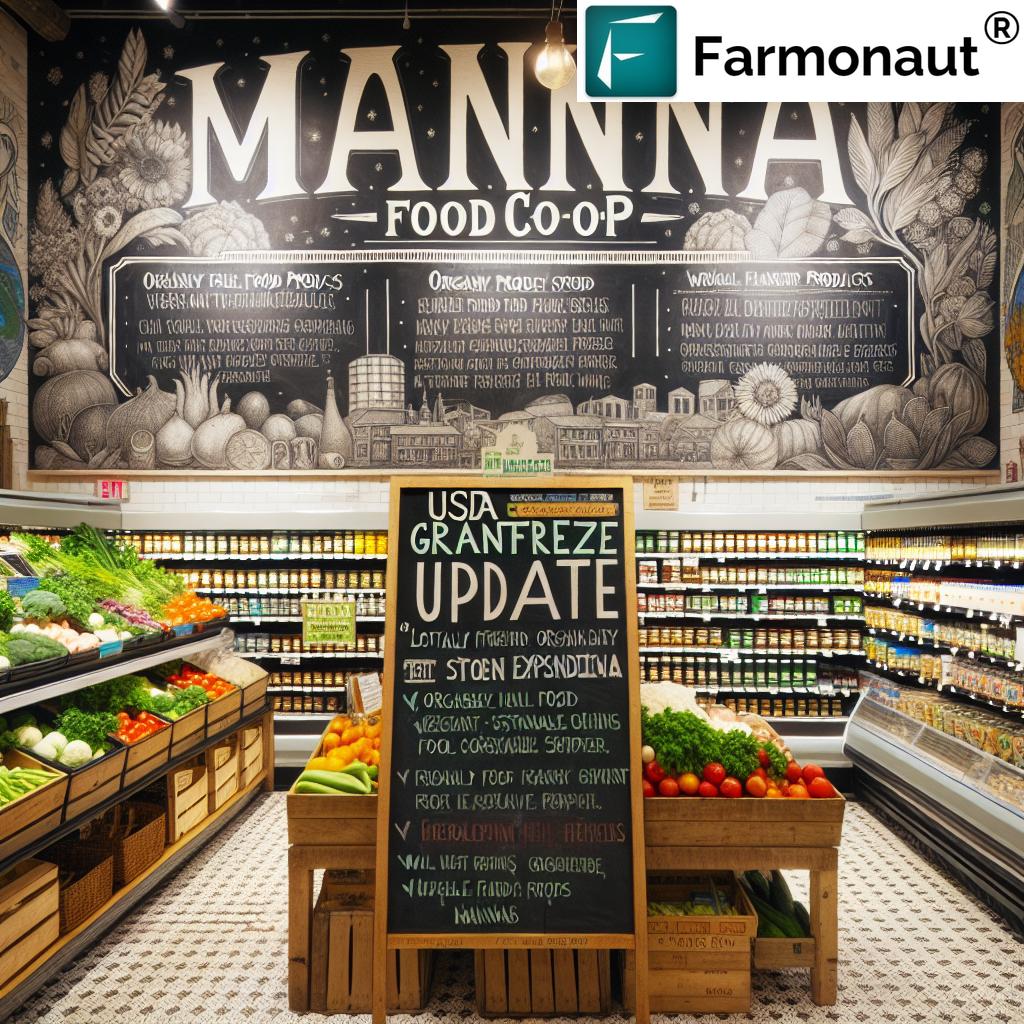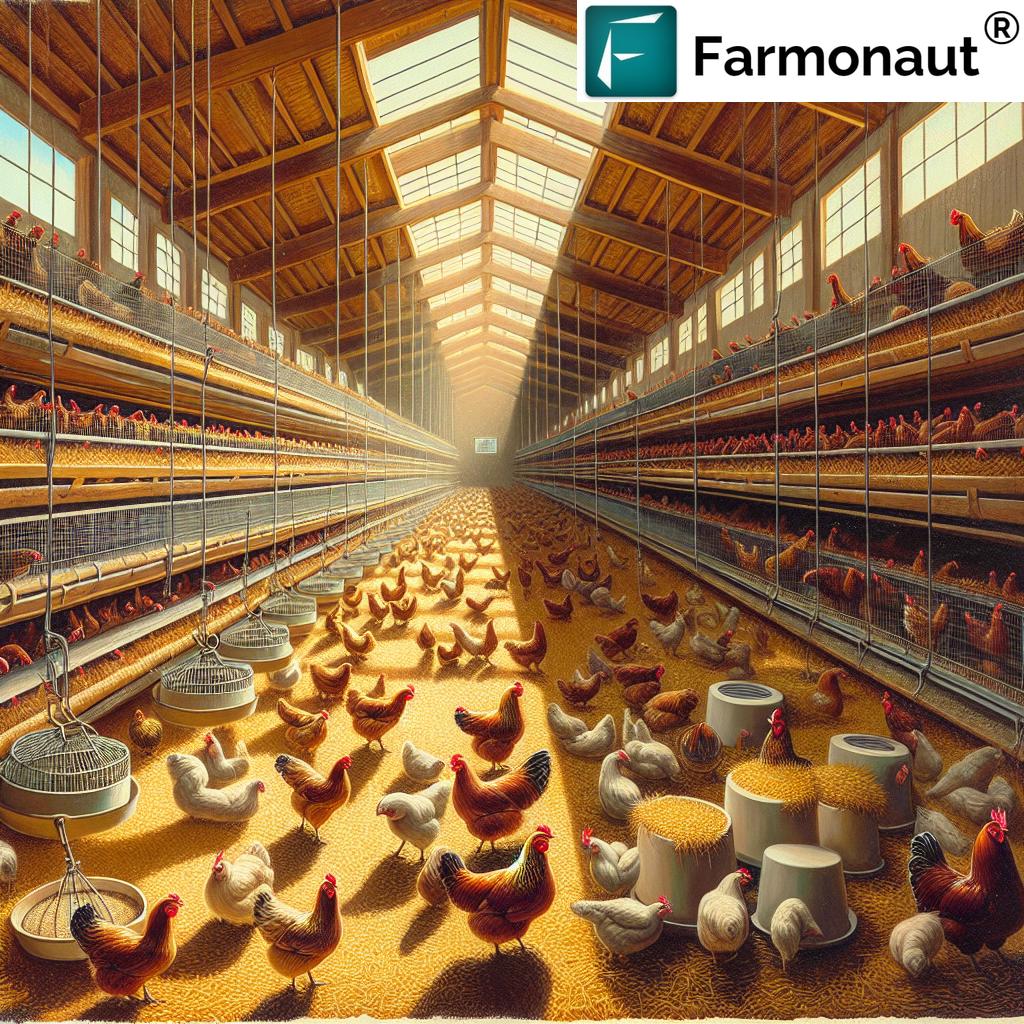Florida Citrus Industry Threats: 7 Key Challenges & Fixes
“Florida’s citrus production dropped by over 75% since 2004 due to greening disease and severe hurricanes.”
Table of Contents
- Overview: Florida Citrus Industry Decline
- Quick Trivia: The Cost of Greening Disease
- The 7 Key Challenges Facing Florida Citrus Industry
- Challenge vs. Solution & Impact Table
- Mitigation Strategies for Citrus Disease & Other Threats
- Innovative Tech & Sustainability Support with Farmonaut
- The Future of Citrus Farming in Florida: Outlook & Opportunities
- Frequently Asked Questions
- Farmonaut Subscription & App Links
Overview: Florida Citrus Industry Decline
The Florida citrus industry decline over the last two decades is a stark illustration of how intersecting biological, economic, and environmental factors can threaten an entire regional economy and cultural identity. Once responsible for nearly 80% of U.S. orange juice production, Florida’s groves are now a shadow of their former self. The dramatic contraction—marked by a reduction from 150 million boxes of oranges in 2004 to only 16 million in 2023—has sent shockwaves through growers, local economies, and downstream industries.
This decline has been driven by:
- Citrus Greening Disease (HLB)
- Hurricanes and extreme weather
- Urban encroachment and land conversion
- Economic challenges for citrus growers
- Rising production costs and labor shortages
- Environmental stressors such as drought and flooding
- Supply chain disruptions (processing, export, labor)
In this detailed analysis, we explore each factor’s impact, quantify the losses, and examine mitigation strategies—from state support to technological innovations—for building a more sustainable future for Florida’s iconic citrus industry.
“Greening disease costs Florida’s citrus industry an estimated $1 billion annually, threatening long-term sustainability.”
The 7 Key Challenges Facing Florida Citrus Industry
To understand the full scope of the Florida citrus industry decline, let’s break down each major threat, quantify its economic impact, and examine both short-term and long-term consequences.
1. Citrus Greening Disease (HLB) – The Most Severe Threat
The citrus greening disease impact remains the central reason for the steep reduction in Florida’s orange production and the decrease in the number of healthy, productive groves. Greening, also called Huanglongbing (HLB), is caused by a bacterial agent spread by the Asian citrus psyllid. Since its first detection in Florida in 2005, nearly all commercial groves have become infected.
- Symptoms: Premature fruit drop, smaller and misshapen fruit, bitter/poor juice quality, and loss of tree health.
- Spread: Rapid and nearly uncontrollable once the psyllid vector is present in a region.
- Yield Impact: As of 2023, orange production is only 16 million boxes—down about 90% from historic levels.
- Economic Cost: Estimated at $1 billion/year in losses for the state.
- Total Acres Infected: Nearly 100% of commercial groves.
Why is greening so devastating? It directly threatens the future of citrus farming in Florida, forcing growers to choose between costly management or exiting the market entirely. Greening’s annual economic toll is unrivaled among agricultural diseases in the U.S..
How Citrus Greening Disease Affects the Entire Florida Citrus Industry
- Decreased Yields: Lower yields reduce supply, making it harder for juice processors to source enough fruit.
- Compromised Quality: Affected oranges have lower sugar content and undesirable juice profiles.
- Increased Costs: Growers face higher production costs (sprays, nutritional treatments, new plantings).
- Groves Abandoned: When trees become unviable, groves are abandoned or converted, accelerating Florida citrus industry decline.
The looming threat: No effective cure currently exists, and resistance depends on both genetic solutions and extensive management.
2. Effects of Hurricanes on Citrus Production
The effects of hurricanes on citrus production are both immediate and far-reaching. Major storms during critical maturation months can decimate crops and cripple the state’s capacity for economic recovery.
- 2017 Hurricane Irma: $490 million in direct citrus losses.
- 2022 Hurricane Ian: $247 million lost, widespread fruit drop, and destruction of young and mature trees.
- Secondary Impacts: Flooding, root damage, blown over trees, damaged processing facilities, and disruption of harvests.
Florida’s unique geography means that the state’s commercial citrus groves, mostly located in central and southern counties, face a persistent threat from hurricanes. Each major event triggers multi-year setbacks, leaving growers with destroyed infrastructure and infected soils, hastening decline.
Why is Hurricane Damage So Difficult for Florida Citrus Growers?
- Unpredictable Timing: Damage often occurs just before or during harvest, negating a year’s work.
- Irreplaceable Losses: Mature trees, destroyed by wind or flooding, cannot be quickly replaced by new plantings.
- Insurance Gaps: Many insurance policies do not cover all types of losses or provide payouts quickly enough for viable replanting.
- Chain Reactions: Damaged groves become more susceptible to greening and secondary diseases.
3. Urban Encroachment on Citrus Groves and Land Conversion
Rapid population growth in Florida, particularly in counties like Polk and Orange County, drives demand for new residential developments.
- Losing Acres: Traditional citrus counties like Polk now see groves replaced by housing and commercial space.
- Citrus Grove Conversion to Housing: Financial pressures make land sales for urban development more profitable than citrus production.
- Industry Impact: As grove area decreases, juice processors and packinghouses lose suppliers, further driving industry contraction.
The urban encroachment on citrus groves accelerates acreage decrease, pushing out both small and large growers and challenging the industry’s ability to rebound—even if new disease-resistant fruit trees emerge.
Consequences of Urbanization on Citrus Industry Economic Impact in Florida
- Regional Processor Closures: Major juice processors like Tropicana and others eventually relocate or shut down due to supply decline.
- Economic Ripple Effect: Every acre converted to housing removes jobs, disrupts local suppliers, and reduces the state’s agricultural output.
- Cultural Loss: Citrus is part of Florida’s identity—losing groves means losing a piece of its heritage.
Key phrase: Urban encroachment on citrus groves not only shrinks the acreage but threatens both the present and the future of citrus farming in Florida.
4. Economic Challenges for Citrus Growers & Industry
The economic challenges for citrus growers are deeply intertwined with other threats. Reduced yields, higher treatment costs, and unpredictable revenues have forced thousands to abandon citrus altogether.
- Industry Size Shrinkage: From 7,389 citrus growers in 2002 to only 2,775 in 2017—a 62% reduction.
- Juice Processing Downturn: Juice facilities have plummeted from 41 (2003) to just 14 (2017).
- Florida’s Orange Production Decrease: Less fruit means processors, packers, and truckers lose business, rippling throughout the state economy.
When production costs increase and boxes of oranges harvested decrease, the viability of citrus as a crop fades—especially for smaller, family-run operations.
Highlights of Citrus Industry Economic Impact Florida
- Once: $6.9 billion per year contribution.
- Now: Shrinking with every new threat—economic model collapsing if interventions don’t succeed.
- Downstream Impacts: Equipment suppliers, packaging plants, and transport logistics are all impacted.
5. Labor Shortages and Workforce Instability
The sustainability of citrus farming in Florida depends heavily on a stable, reliable workforce. Over recent decades, finding and retaining workers for harvest, grove maintenance, and processing has become increasingly difficult.
- Heavier Competition: Urban development offers other employment opportunities, drawing labor away from agriculture.
- Policy Challenges: Changing immigration laws and seasonal employment regulations complicate staffing.
- Operational Strains: Limited workforce can delay harvest, increasing risk of premature fruit drop.
- Increased Labor Costs: Fewer available workers drive up wages, adding to production costs and further pressuring grower profits.
6. Increased Production Costs and Supply Chain Disruption
Management of infected groves requires intensive inputs—pesticides, nutrients, new plantings, and frequent monitoring. Meanwhile, hurricanes and disease outbreaks trigger supply chain challenges.
- Cost Drivers: Pest control, chemical treatments, and irrigation spending have soared since 2005.
- Processing Facility Closures: With fewer boxes harvested, facilities become unprofitable, reducing local processing capacity and disrupting juice production.
- Distribution Gaps: Storm-damaged transport infrastructure can prevent fruit from reaching markets, further lowering growers’ revenues.
- Insurance and Financing: Increased risk of losses means getting loans or coverage is harder—and often more expensive.
7. Environmental Stressors and Climate Change
Florida’s citrus counties face an increasing barrage of environmental stressors—from prolonged droughts to unexpected cold snaps. As climate change accelerates, these stressors may threaten the industry’s sustainability as much as hurricanes or disease.
- Heat & Drought: Lower yields, smaller fruit, and reduced juice quality.
- Unexpected Freezes: Damage to sensitive trees.
- Flooding: Root rot, soil erosion, and loss of nutrients.
Long-term climate resilience depends on both new varieties and rapid adaptation in grove management.
Challenge vs. Solution & Impact Table
| Challenge | Estimated Economic Impact (US$ Millions/Year) |
Description | Potential Solution |
|---|---|---|---|
| Citrus Greening (HLB) | 1,000+ | Bacterial disease causing tree decline, yield loss, poor fruit quality. | Genetic research for disease-resistant trees, intensive vector management, tree replacement, remote grove monitoring. |
| Hurricanes & Extreme Weather | 490 (Irma), 247 (Ian) | Direct and indirect losses due to storms, fruit drop, flooding, infrastructure loss. | Disaster preparedness, improved drainage, better insurance, weather forecasting systems, rapid response protocols. |
| Urban Encroachment | Hundreds annually in lost production | Citrus groves converted to housing, loss of industry acreage, cultural identity loss. | Stronger land-use planning, grower incentives to preserve groves, sustainable development. |
| Economic Challenges | Billions cumulatively | Reduced number of growers, fewer facilities, shrinking workforce. | Economic support for growers, new financing tools, remote loss verification for insurance/loans. |
| Labor Shortages | Difficult to quantify (contributes to fruit loss) | Limited workforce increases costs, reduces harvest efficiency. | Recruitment incentives, technological support, streamlined labor policies. |
| Increased Costs & Supply Chain Disruption | Millions in production loss | Higher input costs, facility closures, bottlenecks. | Fleet and resource management, improve supply chain tech, reduce inefficiencies. |
| Environmental Stressors | Variable, future risk increasing | Climate change, drought, floods, unpredictable events. | Climate-adaptive crop strategies, environmental monitoring & carbon footprinting tools. |
Mitigation Strategies for Citrus Disease & Other Threats
Addressing the Florida citrus industry decline demands coordinated action from growers, research institutions, policymakers, and technology leaders.
- State & Federal Response: In the 2024-25 fiscal year, the Florida Legislature allocated $47 million to support the citrus sector, including $18 million for greening research. Continuous support is crucial to keep the industry alive while long-term solutions are under development.
- Research & Innovation: University researchers are pursuing new citrus tree varieties with resistance to HLB, using genetic traits from spinach and mustard. However, commercial adoption will require a decade or more—the timeline for growers is tight.
- New Plantings: 20,000 new acres of trees have been planted over the past four years. This provides future potential, but only if groves survive today’s threats.
- Disease & Pest Management: Intensive scouting, vector control, early detection via technology, and rapid response to outbreaks remain foundational.
Farmonaut offers technology solutions that can help build resilience against several of these threats:
-
Satellite-Based Crop Health Monitoring (Large-Scale Farm Management):
- Growers and associations can access real-time, data-driven insights into grove health, identifying stress due to disease or extreme weather early.
- This enables rapid, targeted action to prevent yield reduction.
-
Fleet & Resource Management (Fleet Management Tools):
- Optimizes harvest and fertilization logistics, reducing operational costs and improving recovery speed after hurricanes.
-
Blockchain-Based Traceability (Traceability Solutions):
- Helps growers prove the journey of their crop, building consumer and processor confidence in Florida fruit quality.
-
Remote Loss Verification (For Crop Loan and Insurance):
- Gives financial institutions confidence for timely payouts after hurricanes, enabling faster grower recovery.
-
Carbon Footprinting and Environmental Compliance (Carbon Footprinting):
- Tracks the environmental impact of citrus production, supporting sustainability and future regulatory compliance.
For citrus growers and industry partners interested in programmatic data integration or building custom applications, please see Farmonaut’s Satellite & Weather Data API and visit the Developer Docs.
Innovative Tech & Sustainability Support with Farmonaut
At Farmonaut, we are dedicated to empowering growers, agribusinesses, and government agencies with affordable, scalable, and innovative agricultural technology. Here’s how our solutions address the ongoing challenges in the citrus industry:
- Satellite Crop Monitoring & AI-Based Advisory: Advanced, real-time large-scale farm management tools allow growers to monitor grove health, detect anomalies early, and plan irrigation or fertilization. This reduces yield loss by offering better control against disease and the impact of hurricanes.
- Jeevn AI Advisory System: Provides climate-smart recommendations that help prepare growers for changing environmental conditions, storms, and pest outbreaks.
- Blockchain-Based Product Traceability: Enhances end-to-end product traceability to build consumer and processor confidence, vital as fruit quality is compromised by greening and other disruptions.
- Resource & Fleet Management: Efficient management of agricultural fleets (tractors, trucks, sprayers) helps reduce post-hurricane downtime and brings operational savings.
- Carbon Footprinting & Environmental Tracking: Our carbon footprinting tools help monitor and document efforts to make citrus agriculture more sustainable and compliant with evolving regulations.
Our mission is to make precision agriculture—and thus the future of citrus farming in Florida—more accessible, data-driven, and sustainable for everyone.
The Future of Citrus Farming in Florida: Outlook & Opportunities
What will the next decade hold for citrus? Though the Florida citrus industry decline has been severe, the sector persists as a symbol of resilience, community identity, and environmental stewardship.
1. Research Breakthroughs in Disease Resistance
The most promising long-term solution to citrus greening disease impact will be the commercial rollout of trees genetically modified to resist HLB. With multi-million-dollar funding, researchers are introducing genes from spinach and mustard into orange and grapefruit trees.
- Timeline: Up to 10 years before these new trees are yielding fruit at scale.
- Interim Challenge: Ensuring today’s groves and processors survive long enough to benefit from these breakthroughs.
2. Stronger Policy, Economic, and Disaster Response
Florida’s recent legislative allocations indicate an awareness of how vital citrus is to the state’s economy and cultural identity. Continued collaboration with agencies, financial institutions, and tech providers will be essential to create insurance, financing, and disaster response models that can weather future storms.
3. Emphasis on Sustainability and Smart Growth
Citrus can thrive only if land remains dedicated to agriculture. Strategic land-use planning, economic incentives, and sustainability initiatives—all supported by technology such as carbon tracking and traceability—will be central to retaining groves.
4. Technological Innovations in Grove Management
With the rapid evolution of satellite-based farm management, AI decision support, and blockchain-enabled traceability, growers now have unprecedented access to data. This will continue to empower better disease, water, input, and labor management—reducing vulnerability to disease and disaster.
5. Reaffirming the Role of Citrus in Florida’s Culture & Identity
The loss of citrus groves isn’t just an economic issue—it means giving up a key part of Florida’s visual, culinary, and community landscape. Sustaining the industry preserves more than jobs; it keeps a heritage alive for future generations.
Frequently Asked Questions (FAQ) – Florida Citrus Industry Decline & Recovery
-
Q: What is causing the decline in Florida’s citrus industry?
A: The decline is driven primarily by citrus greening disease (HLB), increased hurricane activity, urban encroachment, rising production costs, labor shortages, and environmental stressors. Combined, these factors have led to a reduction in both orange production and economic output from the state.
-
Q: Is there a cure for citrus greening disease?
A: As of now, there is no field-applicable cure. Research focuses on genetic resistance, improved vector management, and supportive treatments for trees, but commercial disease-resistant fruit trees may be a decade away.
-
Q: How significant is the economic impact of citrus industry decline in Florida?
A: Extremely significant. The industry once contributed about $6.9 billion a year to Florida’s economy. Since the early 2000s, both total citrus acreage and the number of growers have sharply decreased, affecting local and state-level economic health.
-
Q: What role does technology play in mitigating losses?
A: Satellite crop monitoring, AI-powered advisory systems, and blockchain-based traceability (like those offered via Farmonaut) support early detection of disease pressure, optimal grove management, post-hurricane response, and transparent supply chains.
-
Q: Is there hope for the future of citrus farming in Florida?
A: Yes. With coordinated action—combining research breakthroughs, technology adoption, and supportive policy—Florida’s citrus industry can stabilize and regrow, preserving its economic and cultural identity for future generations.
-
Q: Where can I access advanced farm management tools or data integration?
A: Farmonaut’s platform is available via web app, Android, iOS, and offers API access for developers and enterprise users.
Farmonaut Subscription & App Links
For affordable, subscription-based access to advanced precision agriculture—satellite imagery, crop advisory, resource management, traceability, and environmental monitoring:
For API integration and automated agronomic data ingestion, visit:
https://sat.farmonaut.com/api
Developer API docs: API Developer Documentation
Conclusion: Ensuring the Next Chapter for Florida Citrus
The sustained decline of Florida’s citrus industry is a complex result of intertwined biological, environmental, economic, and demographic forces. The path to renewed sustainability depends on science-led disease resistance, smart land-use policy, climate and disaster adaptation, ongoing economic support, and integration of digital agriculture tools.
Technology platforms (like Farmonaut’s) put actionable data, traceable supply, and sustainability tools at the fingertips of every grower and industry participant. Coupled with forward-looking policy and robust research, Florida’s citrus sector can chart a course back to resilience and prosperity—protecting not only a core pillar of the state economy, but also a unique part of its cultural identity.
For those invested in the future of citrus, this is not just an agricultural challenge—it is a test of commitment to innovation, stewardship, and continuity for the next generation.















